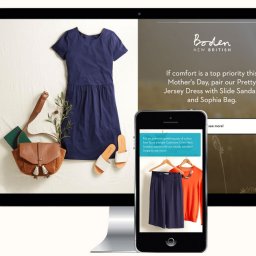
There has been so much written about the post-pandemic future we are all facing I think the only certainty is that things will be different. Quite how they are going to change remains a mystery and unlocking this will be the result of experimentation, data-analysis, and research.
And “following”. I include this because retail execs are going to be under so much pressure to deliver over the coming months their opportunities for innovation are going the be minimal and they might just need to copy someone else and hope for the best.
There was a wonderful interview with Ben Francis, founder of Gymshark a few weeks ago where he talks about the future of retail. He argues that the “best global brands in ten years time will be purpose led, community first brands that clearly define their values and position in the world”. It is a compelling argument, particularly against the backdrop of a pandemic because he also describes these businesses as nimble and able to react quickly.
Contrast this with the retail picture painted in the excellent item by David Williams, Omnichannel expert and CX Guru. He sets out how the shopping experience for the time being will consist of “functional, purposeful, funless trips”. He argues this will keep driving people to websites and that retailers will need to focus on a range of activities from short term trading to clear customer journeys and AI personalisation.
This is a pretty big agenda. Short-term trading and optimisation, mid-term transformation and long-term proposition development. Furthermore, the infrastructure in place to achieve short-term gains will not provide the answers for the mid or the longer term.
Most retailers rely on a technology ‘stack’ to support trading and optimisation. Beyond the eCommerce platform itself, this can include web analytics, session recording, continuous feedback, multivariate or a/b testing and much more. Right now, eCommerce Directors will be under pressure to sweat their investment in these tools as far as they can. What all these have in common is they are very good at reporting what is happening and reacting to real-time events. What they are not very good at doing is predicting the future.

How do you predict the future?
You won’t be surprised to hear me say that you can’t predict the future. If it were possible, I would be writing to you from my luxury villa in the Maldives, not my tiny home office just outside London. Even so, we have to try and decide what the future will be like so that we can put plans in place to be there when it arrives.
One of the ways to do this is using techniques that are applied in discovery research. The main goal of discovery research is to identify what people need. NNGroup describe this as the process of “researching the problem space, framing the problem(s) to be solved, and gathering enough evidence and initial direction on what to do next”. It is not about testing a hypothesis or evaluating an idea or concept, it is entirely open, which is why it is so valuable to omnichannel retailers.
However, there is huge pressure on eCommerce executives to focus on trading, merchandising and to sweat the investment in existing technologies. Few will have the luxury of engaging with large scale transformation projects that encompass discovery research as a component. And that is not surprising considering that few use better-known qualitative research techniques such as usability testing as part of their optimization strategy. This is even though the ROI is proven.
But some retailers have found a way to see into the future using research. Take Gucci for example. They are widely known for “crushing it” with millennials but there fastest growing segment is now Gen Z. Gucci’s CEO Marco Bizzari has been arranging for groups of Gen Z-ers to sit with his team. He says “these young people often know more about certain things than you do” and here he is really referring to technology, which is the central plank of his innovation strategy.
Getting it right
Some of our clients are embracing the opportunities that design research affords them. That is no huge surprise given that if they choose to work with a Design Research agency they are self-selecting. What is clever about the way a couple of them work is that they have made research part of the way they go about their business. That has huge advantages because it means each individual project is carried out within the wider context. It is also efficient with budget, and given the lack of budget assigned to design research that can only be a good thing.
The purist will say that discovery, generative and evaluative research should stand alone and not be ‘tainted’ by combining the requirement. Standalone research is important and there are some questions that can only be answered with targeted and focused research of whichever type is needed. Contextual enquiry is one such method where we go into the users environment and all our time is taken understand how they fit into their world.
More generally though, I like to take a pragmatic approach. If we are running a 90 minute discovery research session, why shouldn’t we tack on a bit of an evaluation of a relevant concept? The participant will be in the right head-space so are ideally placed to react with natural behavior. If we are running an evaluation what is to stop us broadening the opening interview with some discovery work?
This works when there is an ongoing, joined-up programme where everyone understands the wider context. It allows everyone to think about how we can maximise our time spent with users, customers – “participants”. It increases the ROI of the research programme and the insight can also have a longer shelf-life.
Finally, it brings me back to ownership. One of the reasons this can work is that ownership is also shared. Attention is on trading, merchandising and customer journeys, and AI personalisation and the future proposition.
If you would like to know more about how design research can help you now and in the future get in touch on +44(0)800 024624 or email us at hello@ux247.com.















